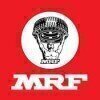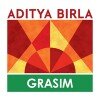Filter interviews by
Mankind Pharma Drug Safety Specialist Interview Questions and Answers
Mankind Pharma Drug Safety Specialist Interview Experiences
1 interview found
I applied via Campus Placement
Which are prepare capusle and which layer 1 and 2 and 4
(2 Questions)
- Q1. Which layer capsule
- Q2. What are prepare NARCOTIC Drugs are preapre
Interview Preparation Tips
Skills evaluated in this interview
Top trending discussions






Interview questions from similar companies

(6 Questions)
- Q1. Whate is a safety
- Ans.
Safety refers to the condition of being protected from harm or danger.
Safety involves identifying and mitigating potential hazards in the workplace or environment
It includes implementing safety protocols and procedures to prevent accidents and injuries
Safety also involves providing proper training and equipment to ensure the well-being of individuals
Examples: wearing personal protective equipment, following safety guid
- Q2. Whate is a sky folding
- Ans.
Sky folding is not a recognized term in the field of safety engineering.
There is no known concept or practice called sky folding in safety engineering.
It is possible that the term was used incorrectly or is not commonly known in the field.
It is important to clarify the question or term with the interviewer for better understanding.
- Q3. Whate is a odite
- Ans.
An odite is a term that does not have a standard definition in the context of safety engineering.
Odite may be a misspelling or a typo of a different term.
It is important to clarify the intended meaning of the term in order to provide an accurate answer.
Without further context or clarification, it is difficult to provide a specific answer to the question.
- Q4. Whate is a worke permite
- Ans.
A worker permit is a document issued by an employer allowing a worker to perform specific tasks or enter certain areas.
Worker permits are used to ensure that only authorized personnel are performing certain tasks.
They may be required for tasks such as working in confined spaces, operating heavy machinery, or handling hazardous materials.
Worker permits typically outline the specific tasks or areas that the worker is aut...
- Q5. Whate is a pass
- Ans.
A pass is a document or certification that allows a person or vehicle to proceed or enter a certain area.
A pass may be required to access restricted areas in a workplace or event
Passes can also be used for toll roads or parking facilities
Examples include security passes, visitor passes, and parking permits
- Q6. Whate is a near miss
- Ans.
A near miss is an incident that could have resulted in injury, damage, or loss but did not.
A near miss is a close call where an accident almost happened but was narrowly avoided.
It is important to report near misses to prevent future accidents and improve safety measures.
Examples of near misses include a tool falling from a height but narrowly missing a worker, or a vehicle almost colliding with another but swerving in
Interview Preparation Tips

Safety Officer Interview Questions & Answers
Sun Pharmaceutical Industriesposted on 20 Apr 2024
(3 Questions)
- Q1. Prasanal protective equipment related
- Q2. Safety related question
- Q3. Adharm material related housekeeping related question

(2 Questions)
- Q1. What is your total experience
- Q2. Why do you want to leave your current employer
Interview Preparation Tips

I applied via Naukri.com and was interviewed in Apr 2023. There were 2 interview rounds.

(2 Questions)
- Q1. Hazards? Psm element?
- Q2. Confined space? Work at height?
Interview Preparation Tips

I applied via Naukri.com and was interviewed in Sep 2022. There were 3 interview rounds.
Reasoning, verbal, English , Quantitative aptitude
(1 Question)
- Q1. What is the difference between flow meter and Venturi meter?
- Ans.
Flow meter measures flow rate using a variety of methods, while Venturi meter measures flow rate using a constriction in the flow path.
Flow meter can use methods like ultrasonic, electromagnetic, thermal, etc. to measure flow rate.
Venturi meter uses a constriction in the flow path to create a pressure difference and measure flow rate.
Flow meter is more accurate and versatile, while Venturi meter is simpler and less exp...
(2 Questions)
- Q1. Why should we hire you in this company
- Q2. What are the long term and short term goals?
Interview Preparation Tips

I applied via Referral and was interviewed in Jul 2021. There were 5 interview rounds.

(3 Questions)
- Q1. Share details of your previous job.
- Q2. How many experience you have? 2 year experience
- Q3. What your qualification? Bsc , Adis, nebose ,iosh
(5 Questions)
- Q1. What are your strengths and weaknesses?
- Q2. What is safety policy?
- Ans.
Safety policy is a set of guidelines and procedures implemented by an organization to ensure the safety and well-being of its employees and stakeholders.
Safety policy outlines the organization's commitment to safety and provides a framework for managing safety risks.
It includes procedures for identifying hazards, assessing risks, and implementing control measures.
Safety policy promotes a safety culture within the organ...
- Q3. What is emergency plan?
- Ans.
An emergency plan is a set of procedures and protocols designed to respond to and manage emergency situations.
An emergency plan outlines the roles and responsibilities of individuals during an emergency.
It includes steps to be taken to mitigate the impact of the emergency and ensure the safety of people and property.
Emergency plans often include evacuation procedures, communication protocols, and emergency contact info...
- Q4. What is personal protective equipment?
- Ans.
Personal protective equipment (PPE) refers to protective clothing, helmets, goggles, or other garments or equipment designed to protect the wearer's body from injury or infection.
PPE includes items such as gloves, masks, safety glasses, helmets, earplugs, and protective clothing.
It is used in various industries like construction, healthcare, manufacturing, and firefighting.
PPE is essential to minimize the risk of workp...
- Q5. What is a duty of safety officer?
- Ans. Prepare toolbox talk. Prepare monthly statistics . Prepare the checklist. Accident report. Management meetings. Arrangements the safety training. Inspection all power tools. First aid training .
(2 Questions)
- Q1. Tell me about yourself.
- Q2. My name Basudev kushwaha from kushinagar up. My qualification Bsc from Arunodaya univercity , Diploma in industrial safety from safe tech national institute kaisa kushinagar. Advance diploma in fire and sa...
(4 Questions)
- Q1. Tell me about yourself.
- Q2. Give me some example of confined space.
- Ans.
Confined spaces are areas that are not designed for continuous occupancy and have limited entry and exit points.
Tanks
Silos
Vats
Pipelines
Tunnels
Sewers
Storage bins
Boilers
Underground vaults
Crawl spaces
- Q3. What are unsafe act and unsafe condition?
- Ans.
Unsafe act refers to actions or behaviors that can lead to accidents or injuries, while unsafe condition refers to physical conditions or situations that can cause harm.
Unsafe act: Actions or behaviors that disregard safety rules or procedures.
Unsafe condition: Physical conditions or situations that pose a risk to safety.
Unsafe acts can include not wearing personal protective equipment, operating machinery without prop...
- Q4. What are fall protection system?.
- Ans.
Fall protection systems are safety measures designed to prevent or minimize injuries from falls in the workplace.
Fall protection systems include personal protective equipment (PPE) such as harnesses, lanyards, and lifelines.
Guardrails and safety nets are also fall protection systems commonly used in construction and industrial settings.
Anchor points and tie-off points are essential components of fall protection systems...
Interview Preparation Tips
- Hight work
- Work Permit System
- Emergency Response
- Confined space
- Unsafe act
- Unsafe condition
- PPE
One can learn a lot from here especially those who gets to visit the vendor as lot of learning take place when various CFTs meet plus you get to know the working culture

(2 Questions)
- Q1. How many years in company
- Q2. How many salery

I applied via Referral and was interviewed in Oct 2022. There were 3 interview rounds.

(3 Questions)
- Q1. What is safety? What is leading indicator & lagging indicator?
- Ans.
Safety is the state of being protected from harm, injury, or danger.
Safety involves identifying and mitigating potential hazards in the workplace or environment.
Leading indicators are proactive measures that can predict future safety performance, such as safety training or equipment maintenance.
Lagging indicators are reactive measures that track past safety performance, such as injury rates or incident reports.
Safety i...
- Q2. What is ptw system? And used for ptw
- Ans.
PTW system stands for Permit to Work system. It is used to ensure that work is carried out safely and efficiently.
PTW system is a formal written procedure used to control high-risk activities.
It involves obtaining permission before starting any work that carries a significant risk.
It ensures that all necessary safety precautions are taken before work begins.
Examples of high-risk activities that require PTW include work...
- Q3. What is scaffolding? Type of scaffolding
- Ans.
Scaffolding is a temporary structure used to support workers and materials during construction or maintenance work.
There are different types of scaffolding such as suspended, supported, and mobile.
Suspended scaffolding is hung from the roof or a tall structure.
Supported scaffolding is built from the ground up and supported by poles or frames.
Mobile scaffolding is movable and can be easily transported from one location ...
(1 Question)
- Q1. Discuss to salary & documents details
Interview Preparation Tips

(2 Questions)
- Q1. How many work in safety Department
- Q2. Which work in safety Department
(2 Questions)
- Q1. What isw safety
- Ans.
Safety is the practice of preventing accidents, injuries, and other potential harm in the workplace or any environment.
Safety involves identifying and assessing risks
Implementing measures to control or eliminate those risks
Training employees on safe practices
Regularly inspecting equipment and facilities for hazards
- Q2. What is OHSA Occupational Safety and Health Administration
- Ans.
OHSA stands for Occupational Safety and Health Administration.
OHSA is a federal agency under the United States Department of Labor.
It sets and enforces standards to ensure safe and healthful working conditions.
OHSA conducts inspections, provides training, and offers compliance assistance to employers.
Examples of OHSA regulations include requirements for fall protection, hazard communication, and respiratory protection.
(2 Questions)
- Q1. What is tunnel safety
- Ans.
Tunnel safety involves implementing measures to ensure the safety of individuals using or working in tunnels.
Regular maintenance of lighting, ventilation, and emergency communication systems
Proper signage for emergency exits and evacuation routes
Regular training for tunnel staff on emergency procedures
Monitoring air quality and implementing measures to prevent fires and explosions
Installing CCTV cameras for surveillanc
- Q2. How many types of tunnel
- Ans.
There are three main types of tunnels: cut-and-cover tunnels, bored tunnels, and immersed tube tunnels.
Cut-and-cover tunnels are constructed by excavating a trench, building the tunnel, and then covering it back up.
Bored tunnels are constructed by drilling through the ground and creating a tunnel without disturbing the surface.
Immersed tube tunnels are constructed by prefabricating tunnel sections and then sinking them
(2 Questions)
- Q1. What is Road safety
- Ans.
Road safety refers to the measures and precautions taken to prevent accidents and injuries on the road.
Following traffic rules and regulations
Using seat belts and helmets
Avoiding distractions while driving
Maintaining a safe distance from other vehicles
Regular vehicle maintenance
Avoiding driving under the influence of alcohol or drugs
- Q2. What is Excavation safety
- Ans.
Excavation safety refers to the precautions and procedures taken to ensure the safety of workers involved in digging and trenching activities.
Excavation site should be inspected daily for potential hazards
Workers should be trained on proper excavation techniques and safety procedures
Protective systems such as sloping, shoring, or shielding should be in place to prevent cave-ins
Utilities should be located and marked bef...
Interview Preparation Tips
Mankind Pharma Interview FAQs
Tell us how to improve this page.
Mankind Pharma Interviews By Designations
- Mankind Pharma Medical Representative Interview Questions
- Mankind Pharma Area Sales Manager Interview Questions
- Mankind Pharma District Manager Interview Questions
- Mankind Pharma Medical Sales Representative Interview Questions
- Mankind Pharma Research Scientist Interview Questions
- Mankind Pharma Senior Medical Representative Interview Questions
- Mankind Pharma Assistant Production Officer Interview Questions
- Mankind Pharma Marketing Executive Interview Questions
- Show more
Interview Questions for Popular Designations
- Drug Safety Associate Interview Questions
- Senior Drug Safety Associate Interview Questions
- Junior Drug Safety Associate Interview Questions
- Drug Safety Physician Interview Questions
- Senior Drug Safety Physician Interview Questions
- Safety Officer Interview Questions
- Drug Safety Associate 2 Interview Questions
- Drug Safety Associate 1 Interview Questions
- Show more
Interview Questions from Similar Companies
|
Research Associate
337
salaries
| ₹3 L/yr - ₹6.5 L/yr |
|
Officer
331
salaries
| ₹2 L/yr - ₹6 L/yr |
|
Senior Executive
298
salaries
| ₹4.5 L/yr - ₹13.8 L/yr |
|
Research Scientist
281
salaries
| ₹3.6 L/yr - ₹10.2 L/yr |
|
Senior Officer
266
salaries
| ₹3.6 L/yr - ₹8.1 L/yr |

Sun Pharmaceutical Industries

Cipla

DRJ & CO

Torrent Pharmaceuticals
- Home >
- Interviews >
- Mankind Pharma Interview Questions >
- Mankind Pharma Drug Safety Specialist Interview Questions










